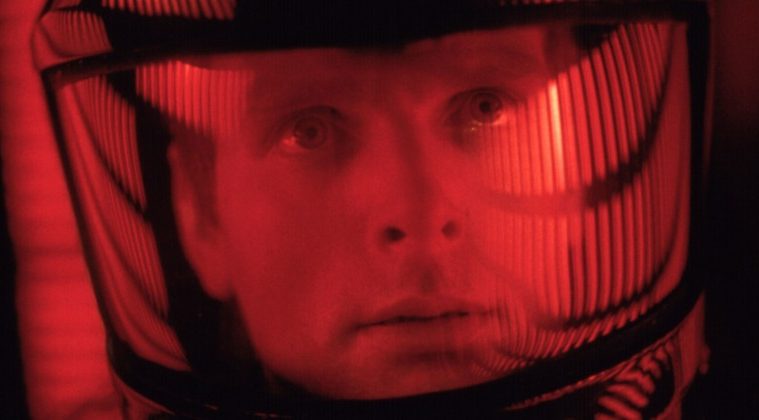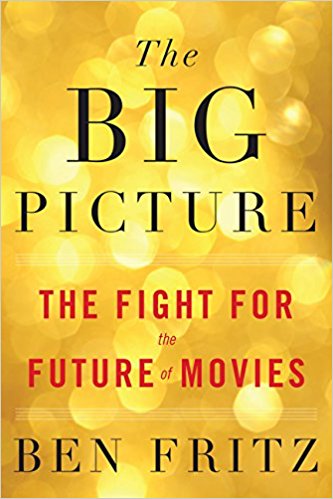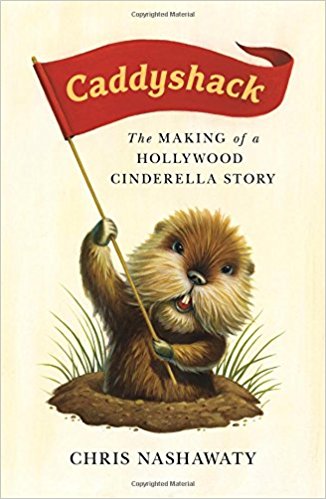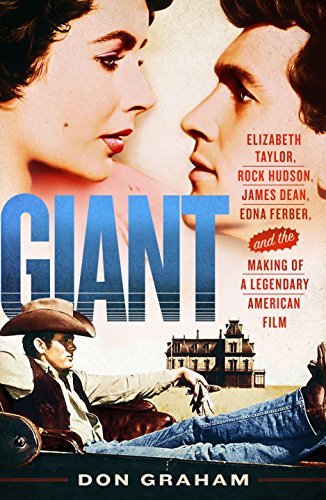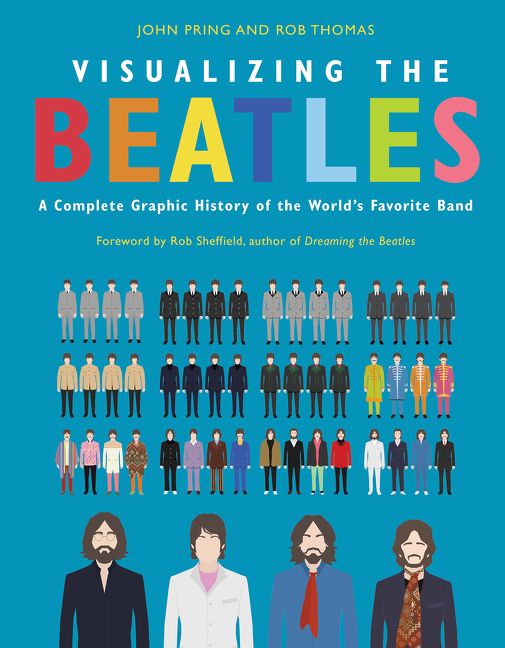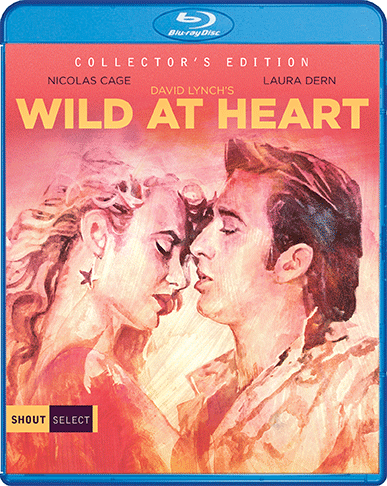
Welcome to almost-summer! That means it’s time to think summer reading. Fans of cinema will find plenty of recent gems to read here, along with some bonus novels, a visual feast for Beatles junkies, and a Blu-ray release of one of David Lynch’s most fascinatingly divisive films. Let’s start with a new look at films based on the work of the horror maestro of Bangor, Maine.
Screening Stephen King: Adaptation and the Horror Genre in Film and Television by Simon Brown (University of Texas Press)
It is high time we had a serious examination of the many film adaptations of Stephen King’s novels. In Screening Stephen King, Simon Brown offers deep analysis of not just the obvious choices like Carrie but low-budget fare like Children of the Corn and The Mangler. Especially fascinating is his study of the several ABC-TV miniseries of the late 1980s and early 1990s. (Your time has come, Tommyknockers fans.) Brown pinpoints the failures of films like Needful Things (“The film suffers because, arguably more than any other King adaptation, Needful Things displays problems from being reduced to a two-hour running time”) and the successes of Salem’s Lot, which he sees as “predating Twin Peaks.” If there is any disappointment with Screening, it is only that the book must end before properly analyzing 2017’s The Dark Tower, It, Gerald’s Game, 1922, and TV adaptation of The Mist. Let’s hope for a volume two.
The Big Picture: The Fight for the Future of Movies by Ben Fritz (Eamon Dolan/Houghton Mifflin Harcourt)
Modern cinema has long needed a book like Ben Fritz’s The Big Picture: The Fight for the Future of Movies — in short, an observant, sharply written analysis of this world of big brands (like Marvel), streaming giants, foreign influence, and the now-archaic star system. Fritz adds the Sony hack to this stew, and the result is extraordinarily insightful. The Steve Jobs chapter alone, in which Amy Pascal desperately tries to keep the film at Sony, makes this an absolute must for any reader with an interest in how Hollywood got to its current state, and where it’s going. In fact, The Big Picture might end up alongside such greats as Julie Salamon’s The Devil’s Candy, Steven Bach’s Final Cut, and Nancy Griffin and Kim Masters’ Hit & Run as one of the essential books on the business of moviemaking.
Space Odyssey: Stanley Kubrick, Arthur C. Clarke, and the Making of a Masterpiece by Michael Benson (Simon and Schuster)
Is there more to say about the making of 2001: A Space Odyssey? Indeed there is, as Michael Benson’s Space Odyssey makes clear. It’s an exhaustive exploration of how the greatest science fiction film in history came to be, a collision of monumental figures like Stanley Kubrick, Arthur C. Clarke, and Douglas Trumbull. While the behind-the-scenes details are fascinating, most memorable is the story of the film’s release. Benson explains how the film’s New York premiere was “one of the darkest nights in Stanley Kubrick’s life.” The evening saw 241 (!) walkouts, boos and hisses, a tearful Clarke, and a despondent director. Soon, of course, 2001 became a box office hit and earned its status as a classic. However, Benson’s book shows that the journey of 2001: A Space Odyssey — now celebrating its 50th anniversary — was not an easy one.
Caddyshack: The Making of a Hollywood Cinderella Story by Chris Nashawaty (Flatiron Books)
For a classic comedy, the making of 1980’s Caddyshack was fraught with drama. Entertainment Weekly film critic Chris Nashawaty breaks it all down in the wildly entertaining Caddyshack: The Making of a Hollywood Cinderella Story. The stories are wonderful, from Rodney Dangerfield’s on-set antics to battles over poster art. What makes Nashawaty’s book truly stand out is the list of interviewees: Chevy Chase, the late Harold Ramis, the elusive Bill Murray, studio exec Mike Medavoy, and many, many others. Interestingly, the most moving moments come from Chase as he remembers his doomed best friend, Caddyshack screenwriter Doug Kenney.
James Cameron’s Story of Science Fiction (Insight Editions)
The six-part series James Cameron’s Story of Science Fiction is currently airing on AMC, and to accompany this look at sci-fi is an accompanying book. It features lengthy, insight-filled interviews with Guillermo del Toro, George Lucas, Christopher Nolan, Arnold Schwarzenegger, Ridley Scott, and Steven Spielberg. These are deep conversations, and all are worth reading. The most newsworthy element here, however, is Lucas’s brief but telling description of where he planned to take episodes seven, eight, and nine of Star Wars. It involved an exploration of symbiotic relationships only hinted at in his Phantom Menace: “[The next three Star Wars films] were going to get into a microbiotic world … If I’d held onto the company I could have done it, and then it would have been done. Of course, a lot of the fans would have hated it, just like they did Phantom Menace and everything, but at least the whole story from beginning to end would have been told.”
Giant: Elizabeth Taylor, Rock Hudson, James Dean, Edna Ferber, and the Making of a Legendary American Film by Don Graham (St. Martin’s Press)
The column’s juiciest book must be Don Graham’s appropriately sprawling account of the making of Giant. The author humanizes the film’s trio of complex icons — James Dean, Elizabeth Taylor, and Rock Hudson. There is some delicious gossip here (much of it involving Dean), but there’s also an appreciation of Giant’s place in the pantheon of classic cinema. By the time the book is done, it’s hard not to be incredibly impressed with all involved with the film, and also with Don Graham.
Visualizing The Beatles: A Complete Graphic History of the World’s Favorite Band by John Pring and Rob Thomas (Dey Street Books)
Obviously, the links between the Beatles and cinema are apparent. What makes Visualizing the Beatles such a perfect fit for this column, however, is the book’s fresh approach to Fab Four history. Think a Beatles bio made up entirely of infographics, and you’re almost there. Yes, there is a way to tell this story in a way we’ve not seen before — Visualizing the Beatles is the proof. Kudos to the brilliant John Pring and Rob Thomas for their truly original creation.
Two from DK: Star Wars Encyclopedia of Starfighters and Other Vehicles by Landry Q. Walker and Marvel Studios 101: All Your Questions Answered by Adam Bray
As long as there are new Star Wars films, television series, and comic book and literary spinoffs, there will be new texts like DK’s Star Wars Encyclopedia of Starfighters and Other Vehicles by Landry Q. Walker. As is always the case with books such as this, the design is smart and simple and the details are quite enjoyable. Check out this note on Admiral Ackbar’s Home One cruiser: “Sections of Home One are filled with water, replicating the Mon Calamari’s natural environment.” Neat! Similarly fun, especially for younger readers, is Marvel Studios 101: All Your Questions Answered by Adam Bray. This breakdown of every Marvel film from Iron Man to Black Panther is written in a fun, colorful manner (sample section heading: “First tell me about baby Groot. Is he the same Groot?”), and does a fine job of tying the films directly into Infinity War. Is it necessary for longtime Marvel fans? Absolutely not. But for those just getting into the Marvel characters (like my 7-year-old), it’s a perfect introduction.
Behind-the-scenes looks at four recent films: Ready Player One, Pacific Rim Uprising, Rampage, and Tomb Raider
The behind-the-scenes coffee table book is undergoing a renaissance thanks to publishers like Insight Editions and Titan Books. Our roundup of four recent examples starts with The Art of Ready Player One (Insight Editions) by Gina McIntyre. It’s a treat to see a book such as this focused on a Steven Spielberg film, and the effects-heavy RPO is certainly an ideal choice. The most enlightening section in this collection of character designs, artwork, stills, and interviews is a look at the [SPOILER!] stunning Shining sequence; as the book explains, some real footage from Kubrick’s film was used, along with recreations from ILM effects artists. Author Daniel Wallace’s The Art and Making of Pacific Rim Uprising (Insight Editions) features booklets, stickers and foldouts highlighting the sequel’s mighty Jaegers and Kaiju. The Art and Making of Rampage (Insight Editions) by Ellen Wolf shows the design work that went into the creation of George, the gentle gorilla and FODJ (Friend of Dwayne Johnson) who is turned into a destructive monster. And even though Lara Croft reboot Tomb Raider came and went rather quickly, Sharon Gosling’s Tomb Raider: The Art and Making of the Film (Titan Books) demonstrates the physicality and passion that the great Alicia Vikander brought to the role.
Recommended early summer reads
The trailer for upcoming Shailene Woodley vehicle Adrift is pretty harrowing. If the memoir on which the film is based is any indication, it’s going to be a tough but inspiring watch. Adrift: A True Story of Love, Loss, and Survival at Sea (HarperCollins) is written by Tami Oldham Ashcraft, the character played by Woodley onscreen. (Ashcraft co-wrote the memoir with Susea McGearhart.) It’s a gripping, often heart-stopping read, one pulsing with deep emotion.
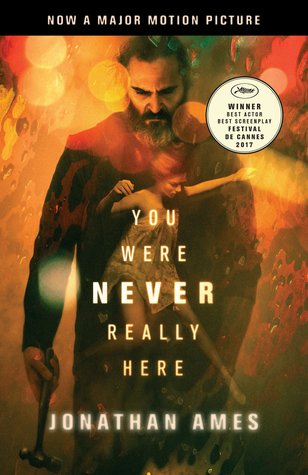 Also heart-stopping, but for very different reasons, is Jonathan Ames’s You Were Never Really Here (Vintage Crime). Lynne Ramsay’s big-screen adaptation is one of the strongest films of 2018, and Ames’s book is similarly riveting. The author’s descriptions of the protagonist, Joe, having “a mournful face, a self-involved face,” make it clear that Joaquin Phoenix could not have been a more apt choice of star.
Also heart-stopping, but for very different reasons, is Jonathan Ames’s You Were Never Really Here (Vintage Crime). Lynne Ramsay’s big-screen adaptation is one of the strongest films of 2018, and Ames’s book is similarly riveting. The author’s descriptions of the protagonist, Joe, having “a mournful face, a self-involved face,” make it clear that Joaquin Phoenix could not have been a more apt choice of star.
The great Jo Nesbo, author of the Harry Hole series, returns with a unique take on Macbeth (Hogarth) set in grim, 1970s Scotland. The more familiar one is with Shakespeare’s Macbeth, the more bold Nesbo’s tale seems, yet it’s also readable for fans of Nesbo works like The Snowman. (Do not hold the author responsible for last year’s god-awful film.) This is ice-cold noir steeped in atmosphere and mystery.
Once Alex Garland’s Annihilation came to a close, many viewers had an intense desire to dive into think-pieces about the mind-bending sci-fi masterpiece. Another option is to read Jeff Vandermeer’s Southern Reach trilogy. Annihilation is book one of the series, and publisher FSG has made it easy by combining all three into a single text titled Area X. The differences between book and film are plentiful, and make for a fascinating look at the art of adaptation.
Author Jason Fry has proven to be one of the finest authors of book inspired by or based on Star Wars, and his novelization of The Last Jedi (Del Rey) is his best work yet. This “expanded edition” of the story has made waves for its bold opening, a prologue in which a hardened Luke Skywalker on Ahch-to imagines an alternate life with a wife on Tatooine. It’s a moving moment, and there are a great many others here that rival its originality and emotion. Fry achieves the rare feat of crafting a novelization that warrants its own place in the series canon.
And just in time for the release of Solo: A Star Wars Story is Last Shot (Del Rey), a “Han and Lando novel” by Daniel Jose Older. This rollicking story set after Return of the Jedi (and the Aftermath book trilogy) is the Han and Lando follow-up fans have been waiting to read for years. There are some nice callbacks to the characters’ younger days, but what’s most resonant is the sense Solo and Calrissian as older, wiser friends. The ending involving Han, Lando, and Leia is especially poignant.
Blu-ray bonuses:
David Lynch’s Wild at Heart finally gets the Blu-ray edition it deserves thanks to Shout Factory, and it was certainly worth the wait. As expected from a Shout Selects release, the special features are plentiful — more than an hour of deleted scenes, multiple documentaries, the propulsive original trailer. Best of all is a new interview with Barry Gifford, author of the novel on which Heart is based and co-screenwriter of Lynch’s Lost Highway. His description of Sailor and Lula as “pure products” in a “true love story” is, in a word, lovely.
And the long-awaited Criterion Collection edition of Martin Scorsese’s The Age of Innocence remains one of the most important releases of 2018. This sumptuous Edith Wharton adaptation might be Scorsese’s most emotionally devastating film, and the performances — especially from Michelle Pfeiffer and Winona Ryder — seem as powerful today as they did in 1993. This is, indeed, the Age of Innocence release we’ve coveted for years, with new interviews, a documentary made to accompany its original release, and a digital transfer that is positively breathtaking. Best of all is a fine essay from critic Geoffrey O’Brien. His description of the film’s final scene is nearly as gorgeous as the scene itself: “[W]e are left with the extended epilogue of Newland in old age, meditating on the outcome of his life and rejecting for reasons he can barely express the chance for a reunion with Ellen in Paris. The compound of emotions that Scorsese distills here gives this most musically constructed film the sublimest possible coda.”
See more recommended books on filmmaking.
What are you reading?

